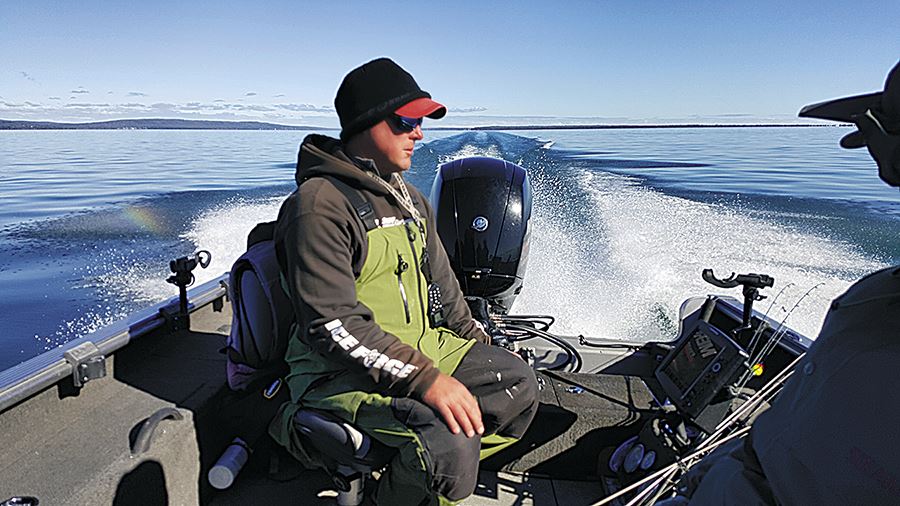
Salmonids such as chinook, steelhead, lake trout and Coho, as well as walleye and perch, dominate the bags of most Great Lakes anglers, many of whom appreciate the food value of their catch as much as they do the sport of pursuing and catching their favorite gamefish. But for true sport, few who have tangled with a big bronzeback will question that the battle offered by a smallmouth bass is second to none.
Late April marks the start of reliable fishing action for smallmouth bass across many of the Great Lakes, that continues through May as waters warm and the fish prepare for the spawn. Once the bronzeback move onto their spawning beds the fish can be pushovers for lures presented above, including the surface as much as 20 feet overhead. I’ve had fish rocket up from as deep as 15 feet to smack a clown-patterned surface chugger, clearing the surface like a tarpon on the initial strike.
The message is, wherever and whenever they are found or how they are fooled, “yella’ bass” will put on a show and make a great effort to free themselves of the hook. It’s that fight that endears smallmouth to so many anglers.
Avid Great Lakes smallmouth anglers I know rely on eyesight to determine where to start fishing for spring bass. First, they look for rocky shorelines, rip-rap or reefs, knowing that bronzebacks are creatures of stone and gravel. Once they have determined an area to fish, they note the water’s clarity and cast and retrieve their baits to allow the offerings to be presented at the depth where they can just see bottom from the deck of their boat.
That productive depth has changed across the board, in recent years with the clearing of many of the Great Lakes’ most popular smallmouth fishing waters, due to the filtering effects of zebra mussels. The clearer water allows the sunlight to reach deeper and forces the bass to go deeper to find their comfort zones, whether spawning, staging, feeding or loafing.
A popular method for using artificial baits to fool smallmouths is drop-shotting, a finesse technique developed by largemouth bass anglers but found to be a fantastic way to catch smallmouth bass. With the weight at the end of the line, and a bait, typically a neutrally buoyant soft plastic worm, tube or, in waters where the invasives have become pervasive, a fake round goby, affixed to a hook above, the presentation is a pushover for bass relating to the bottom.
And bottom is key for catching Great Lakes bronzebacks any time of year. As stated, the bass relate to rocks and gravel and rocky shorelines and nearly always will be found at depth, rather than suspending. Note I said “nearly,” for as soon as you concentrate your smallmouth bass at the bottom of the water column, you’ll discover a pod of fish breaking the rules. Which isn’t a bad thing.
Guide Spotlight
Captain Lee highlights Captain Jeff Evans
Captain Jeff Evans has been guiding anglers to Lake Superior smallmouth bass for more than a quarter century from his base in Ashland, Wis., on the world famous fishing grounds of Chequamegon Bay. The Hayward native has been at the guiding game full-time for the past five seasons, following an 18 year career working with at-risk youth. The licensed Wisconsin Fishing Guide runs a 2017 Lund 2075 Pro Guide with a 150hp Mercury four-stroke. To book a bronzeback trip or just talk Great Lakes bass fishing, visit his web site at www.jeffevansfishing.com.

